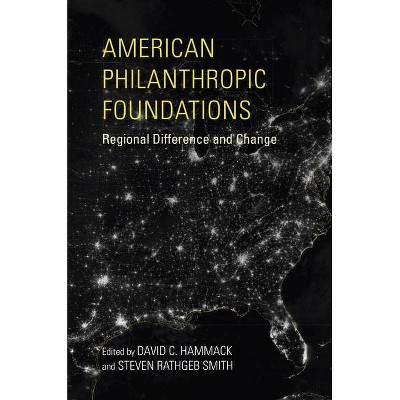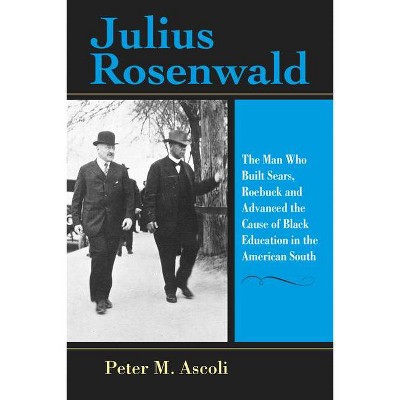Buying Respectability - (Philanthropic and Nonprofit Studies) by Thomas Adam (Hardcover)

Similar Products
Products of same category from the store
AllProduct info
<p/><br></br><p><b> About the Book </b></p></br></br>An important contribution to the relatively new field of transnational history, this book establishes philanthropy as a prime example of the conversion of economic resources into social and cultural capital.<p/><br></br><p><b> Book Synopsis </b></p></br></br><p>In 19th-century Leipzig, Toronto, New York, and Boston, a newly emergent group of industrialists and entrepreneurs entered into competition with older established elite groups for social recognition as well as cultural and political leadership. The competition was played out on the field of philanthropy, with the North American community gathering ideas from Europe about the establishment of cultural and public institutions. For example, to secure financing for their new museum, the founders of the Metropolitan Museum of Art organized its membership and fundraising on the model of German art museums. The process of cultural borrowing and intercultural transfer shaped urban landscapes with the building of new libraries, museums, and social housing projects. An important contribution to the relatively new field of transnational history, this book establishes philanthropy as a prime example of the conversion of economic resources into social and cultural capital. </p><p/><br></br><p><b> Review Quotes </b></p></br></br><br><p>[Adam] presents a good deal of interesting material, especially on German and North American mutual influences, and correctly positions the book as a contribution to the literature on Atlantic transnational intercultural tradition most tellingly identified by Daniel Rodgers. Adam focuses on traditional categories of philanthropic activity--cultural institutions, housing, women's roles, ethnic-religious orientation. . . . Adam focuses on what the Germans call Stiften--i.e., 'big philanthropy'. . . . -- ChoiceFeb. 2010</p>--S. N. Katz "Princeton University"<br><br><p>[This book] is an intricately woven composition . . . Those interested in urban history, the use of philanthropy to create new institutional forms and create opportunities for larger audiences, and the ease with which ideas cross national boundaries to influence decision making in other countries will find this volume informative and thought provoking.</p>-- "Nonprofit and Voluntary Sector Quarterly"<br><br><p>[T]his richly documented book offers many new insights into philanthropic activism and urban society between Jacksonianism and the Progressive era.June 2010</p>-- "American Historical Review"<br><br><p>Adam has pulled together stories that are very much worth telling, and explore significant issues.</p>--David C. Hammack "Case Western Reserve University"<br><br><p>Adam's book . . . has merit in its elucidation of the influences of European social projects upon Americans' conceptions of goals for their own society and the extent to which American implementation of philanthropic programs caused a reconsideration of the means and ends of philanthropic endeavor in Europe. His willingness to conceive of philanthropy as an expression of transatlantic ideas and cultural concerns provides a welcome addition to the historiography of philanthropy.Vol. 96 4, March 2010</p>--Mark D. McGarvie "University of Richmond, Richmond, Virginia"<br><br><p>The field of philanthropy as an avenue of social advancement into the ranks of urban elites will be a familiar theme for most readers, though Adam makes the point particularly effectively...Spring 2011</p>-- "Journal of Social History"<br><br><p>This sensible book examines philanthropic networks and cultures in various European and North American cities. Thomas Adam demonstrates the interdependence of seemingly contradictory trends: the intercultural transfer of reform ideas and the use of philanthropy for local prestige and status.Dec. 2010</p>-- "Urban History"<br><p/><br></br><p><b> About the Author </b></p></br></br><p>Thomas Adam is Associate Professor of History at the University of Texas at Arlington. He teaches courses on German and modern transatlantic history. His research focuses on nineteenth-century philanthropy in the United States, Great Britain, Canada, and Germany and the intercultural transfer of philanthropic concepts between these countries. he has just published a book on funding higher education in Germany, 1800-1960, and is currently working on a comparative study of funding for university education in the United States and Germany, 1800 to 1945.</p>
Price History
Price Archive shows prices from various stores, lets you see history and find the cheapest. There is no actual sale on the website. For all support, inquiry and suggestion messagescommunication@pricearchive.us




















